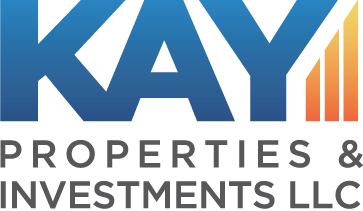By Alex Madden, Vice President, Kay Properties and Investments
Key Takeaways:
- How does Delaware Statutory Trust Syndication benefit investors?
- Why Real Estate Syndication via a DST can potentially reduce risk for investors*?
- What is the Portfolio Optimization and Diversification Theory?
- How real estate syndication and DST investments can help investors access larger real estate assets?
Delaware Statutory Trust 1031 exchanges have never been more popular, and one of the reasons behind this growth and investor appeal is the power and flexibility of real estate syndication. Real Estate syndication is a major underlying principle for how a Delaware Statutory Trust 1031 investment is structured, and why they continue to grow as an alternative investment for accredited investors.
“A lot of people still don’t know about the potential benefits of the 1031 DST syndication structure. Last year, we helped our clients complete more than $600 million of equity investments in these 1031 DST vehicles,” explained Dwight Kay, the founder and CEO of Kay Properties who is a prolific author on the subject including authoring multiple white papers and what some consider to be the first book ever published on the subject.
What is Syndication and How Does it Work within the Real Estate Investment Arena
Generally speaking, syndication is the process of organizing a group of individual investors or an organization for the purpose of collectively investing in an asset that requires a significant amount of capital. When applied to the world of real estate investments, syndication refers to the process of organizing a collection of investors to combine their financial resources in order to purchase one or more real estate assets. Real estate syndication means investors are issued beneficial interests or shares of real estate. Profits and losses are usually split according to their respective percentage ownership interests.
The concept of syndication is especially relevant when discussing Delaware Statutory Trusts because not only do DSTs qualify for 1031 exchanges as outlined in Revenue Ruling 2004-86 of the Internal Revenue Code Traditional 1031 exchanges often involve a sole investor exchanging investment real estate into another like-kind real estate asset. A Delaware Statutory Trust 1031 exchange allows multiple investors to own real estate for their 1031 exchange or cash investments. In addition, unlike other group investment structures such as Tenant in commons (TICs) which limit the number of investors to 35, DSTs allow for a much higher number of investors (typically up to 499 investors), creating an ideal choice for investors who want to access larger and potentially more diverse real estate assets.
What are the Benefits of a Delaware Statutory Trust Syndication?
Benefit #1: Passive Ownership
One of the most attractive aspects of DST 1031 exchange investments to many investors is that they eliminate the challenges associated with active ownership and management. In DST investments, a sponsor creates the DST and has the responsibility of managing the entire business and assets of the trust. These responsibilities can include the following:
- Underwriting the real estate deal
- Conducting all the due diligence on the property (ies)
- Arranging the necessary financing – although some DST 1031 investments are debt free with no loans on them
- Creating a business plan for the property (ies)
- Finding a property management team.
- Coordinating investor relations and potential monthly distribution checks to investors.
In this way, the Delaware Statutory Trust syndication provides investors a passive ownership structure.
According to Kay, in exchange for giving up active management, the passive investor of a DST 1031 property will typically receive 100 percent of the pro-rata portion of any potential principal pay-down from the loan on the property, thereby potentially building equity. In addition, DST 1031 properties are structured so that the investors in the DST receive 100 percent of their pro-rata portion of the potential rental income generated by the property’s tenants.
“Furthermore, although appreciation is never guaranteed, DST 1031 investors receive 100 percent of their pro-rata portion of any potential net appreciation of the property over the hold period,” said Kay.
Benefit #2: Access to Larger, Institutional Grade Assets
Another attractive element for investors of syndicated Delaware Statutory Trust 1031 exchanges is that they provide investors within the trust the opportunity to access large, institutional grade real estate assets that would otherwise potentially be outside of an individual investor’s price point. With a typical investment minimum investment of $100,000, individual investors in a DST can purchase an ownership interest in large industrial distribution centers, medical buildings, self-storage facilities, and even large $50 million-plus apartment communities. In this way, the syndication structure of Delaware Statutory Trust 1031 exchanges allows investors to access a level of real estate that they oftentimes would not have been able to buy before.
Benefit #3: The Potential to Reduce Risk Through Greater Diversification*
A third advantage of the Delaware Statutory Trust syndication structure compared to a normal 1031 exchange is that it increases the ability of investors to invest in multiple properties, thus potentially reducing individual risk. Beyond the ability to allow investors to participate in multiple investment properties, DST syndications also allow investors to invest in multiple asset classes (multifamily, commercial buildings, self-storage, medical facilities, industrial distribution centers, etc.) as well as in multiple geographic locations. Portfolio optimization and diversification was first recognized by Nobel-Prize winning economist Harry Markowitz, and continues to be one of the most proven economic theories for success today, including its application in Delaware Statutory Trust 1031 exchanges. * It is important to note however that diversification does not guarantee profits or protection against losses and that investors should read each DST offerings Private Placement Memorandum (PPM) paying attention to the risk factors prior to considering a DST investment.
Obviously, as with all forms of real estate investments, there is an underlying level of risk that investors should be aware of including things like economic downturns, vacancies, tenant repairs, etc.Investors should not invest in DST investments or real estate syndications if they are unable to sustain the loss of their invested principal.
Benefit #4: Ability to Work with and Learn from Syndication Experts
Commercial real estate investing requires years of experience and lots of resources. Even for experienced investors, the ability to source, inspect, underwrite, and close on large institutional properties within a 1031 exchange timeline is often beyond their reach. However, for Delaware Statutory Trust syndications, the investor can work with highly specialized team members at Kay Properties & Investments. Kay Properties is a national Delaware Statutory Trust expert advisory firm. They have created the www.kpi1031.com platform that provides investors access to the marketplace of DSTs from more than 25 different DST sponsor companies. In addition, they have custom DSTs available only to Kay Properties clients and provide investors independent advice on DST sponsor companies as well as full due diligence and vetting on each DST investment.

